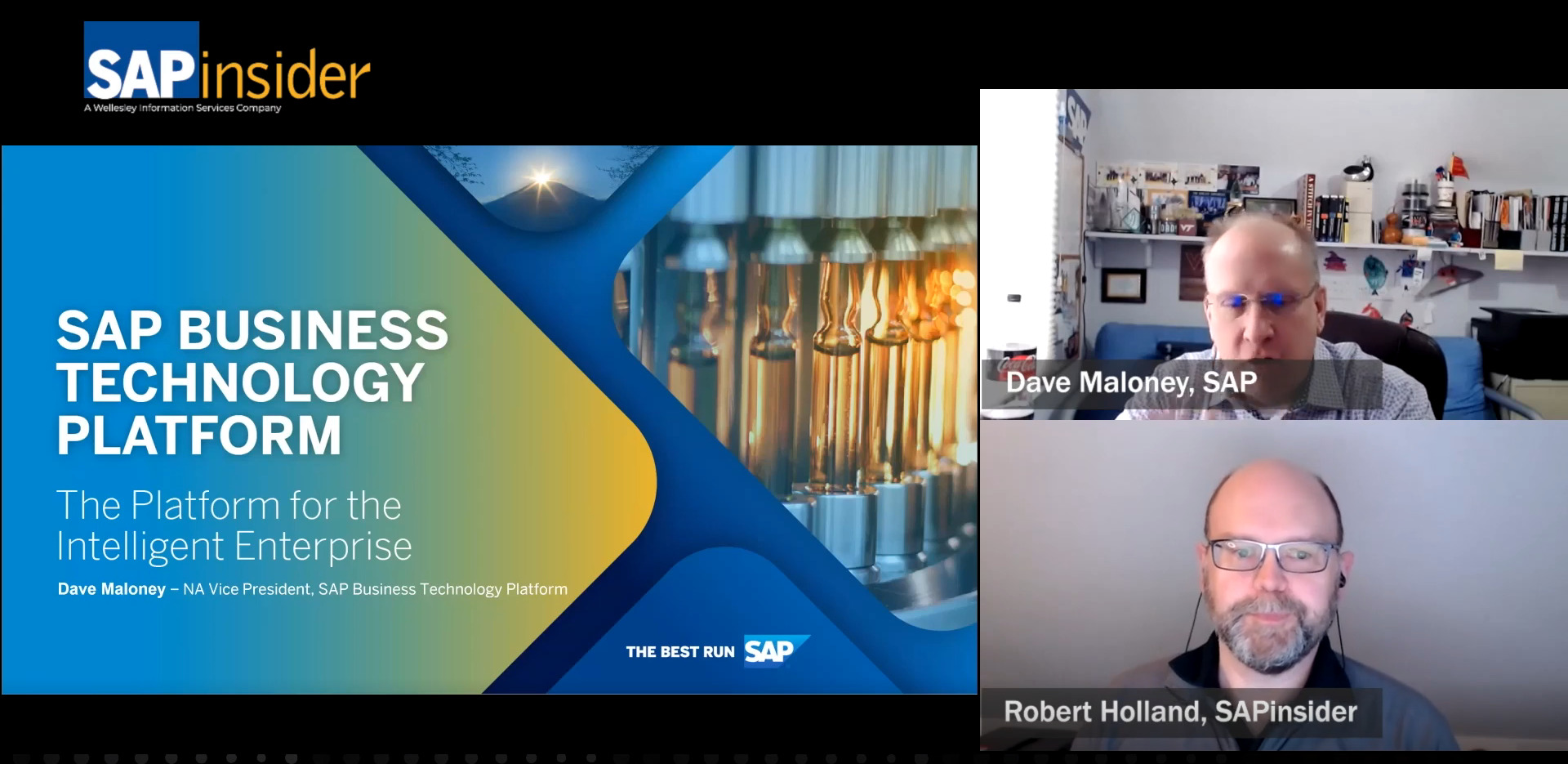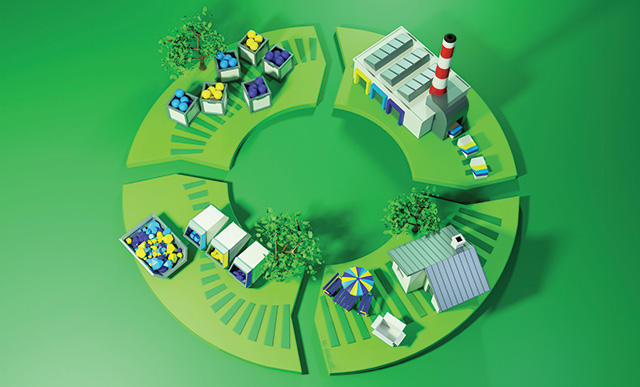Hilti Group’s Circularity Mission with SAP BTP
Meet the Authors
Key Takeaways
⇨ The SAP community has been leaning on SAP BTP and the SAP Sustainability Control Tower solution for its sustainability and competitiveness efforts
⇨ One company that has recently demonstrated its use of SAP BTP to support a new circularity solution is Hilti Group
⇨ Hilti’s overall circularity program has proved a very attractive financial business case, demonstrating substantial savings
Whether driven by ever-expanding sustainability regulations or by initiatives at self-motivated companies, sustainability is quickly becoming a sign of purpose-driven and purpose-oriented organizations that doesn’t go unnoticed by forward-looking customers and boards.
It also seems that, among SAP partners, consumers are voting with their wallets around sustainability, especially when kept separate from the rest of organizational functions and strategically infused into the business.
However, this new ambitious approach to sustainability requires the integrity of such data to become as good as finance data – a long way from relying on predictions and rough estimates. So how tangible can the results be and how long would this take?
Most recently, the SAP community has been leaning on the use of SAP Business Technology Platform (BTP) and the SAP Sustainability Control Tower solution to act on its burgeoning sustainability efforts and increase competitiveness while establishing its ESG principles.
One company that has recently demonstrated its use of SAP Business Technology Platform to support a new circularity solution is Hilti Group, as the organization embarked on a mission to automate and track materials across its value chain. The multinational company, which develops, manufactures and markets products for the construction, building maintenance, energy and manufacturing industries, recently embarked on the creation of remanufacturing operations at its 70 repair centers worldwide. Working on increasing its sustainability by focusing on the advancement of the circular economy, Hilti was determined to embed circularity in its operations, a move that establishes a benchmark for sustainable practices in the construction industry.
So teaming up with SAP global strategic partner, Boston Consulting Group (BCG), creators of SAP BTP’s Circelligence tool, Hilti has recently made possible the calculation of a qualitative and quantitative circularity score. At a later stage in the circularity initiative, SAP itself lent a hand by joining the Hilti project, helping support its development and working to gain insights into automation opportunities based on Hilti’s experience.
As the cherry on top, Hilti now receives automated updates to BCG’s Circelligence database of materials and tracks them across the value chain – from input to product design, production, business model, usage and end-of-life – with a web-based interface. As the company explains, this was made possible by having ERP be the core of its circularity efforts in reducing construction’s impact on the environment.
Creating a new standard for measuring circularity
Despite its indisputably positive impact in creating places for people to live, work and play, the construction industry leaves a large environmental footprint, using roughly 50 percent of the world’s mined raw materials.
However, acting on its mission to help turn things around and set a precedent in the industry, Hilti Group decided to start its circular economy program in 2020, spurred by its revised sustainability goals. “We saw from the beginning that circular economy was an area where we can add a lot of value based on our history of focusing on long-lasting tools, having a whole network of repairability built into our tools,” Caroline Stern, head of circular economy at Hilti Group, explains to SAPinsider.
When it began the Circelligence journey, Hilti already had a fleet management leasing program where customers only paid for the ability to use the tools they needed, rather than owning them, thus establishing an element of circularity in its operations. “So we felt we were in a very strong starting position for circularity, and one needed to drive that. But we realized very quickly that, unlike with CO2, there’s no standard way to measure circularity,” she admits.
One specific hurdle that required a specialized approach to Hilti’s circular ambitions was the fact that the task brought a level of complexity into the SAP landscape that the system was not designed for. For example, with remanufacturing, the company identified the need to bring back a product into use either as a full component or as a spare part, after being sold.
For this reason, partnering with BCG, the organization pulled up its sleeves to create a standard for measuring circularity in BTP for its purposes, and ultimately, helping set an example not only for the construction industry but for others – such as transportation, manufacturing, food retail, agriculture, fashion – or any sector freshly embarking on their CO2-mindful journey.
Stern shares that the value of the circularity score comes with both a qualitative and quantitative perspective. “The qualitative is about how intentionally we are making decisions regarding circular economy and the quantitative side is about how we measure the material flow of our items.”
Most companies usually have a good idea of how much money they spend on buying steel or plastic in a particular year, for example, as it is easy to track using BTP. But it’s a much greater challenge to track how much it weighs and how much of it was composed of recycled content. This is what creates a challenge for most companies that strive to achieve transparency. “That’s why doing this material database became where the bulk of the circularity work took place behind the scenes,” Stern says.
While Hilti did this process relatively manually for a couple of years, it was SAP’s direct involvement which helped to lay the groundwork and help automate its circularity score for the future.
Upon directly joining the project in 2023, SAP focused on “translating all the information and experiences that we had gathered and calculating that score over the years, turning it into something that is also usable for other organizations,” Stern explains. “It basically anonymized our experience and data, using very much the structures and experience of how we had previously done it manually.”
From estimates to transparent reporting
While sustainability efforts may still be seen as too laborious and their results deemed not as tangible in organizations relying too much on estimates and not on factual data, Hilti’s strategy managed to achieve exactly that – clearly reported data, extracted from BTP, as part of a yearly sustainability report and a way to measure its progress.
“We have published all of the details in a highly transparent way, including all of the methodology. The reason we wanted to do that was also because we wanted to contribute to advancing the discussion on measurements of circular economy. Publishing that transparently, we are also showing where we are at with our progress and gaps, compared to where we would like to go,” Stern explains.
As an even more important benefit of this circularity strategy, it has helped with the internal quantifiable data when calculating emissions, value chain emissions and everything linked to the products they buy.
This is often very difficult to calculate as usually such information is simply not in most companies’ systems. However, being able to rely on all of the work done already on the materials database, and having that knowledge of exactly which materials and what recycled content was used, allows the company to calculate its Scope 3 CO2 emissions much more quickly with BTP. It also makes it possible to commit to the science-based target initiatives for CO2 reduction.
Despite the odds and after all efforts invested in the initiative, Hilti saw a clear demonstration of success, as one of the key findings showed that the percentage of recycled content of all its products across the entire landscape reached 27 percent. This is compared to about 8 percent on a global level.
“That was a very important starting point for us, and we’ve used that information broken down by material groups, but also by suppliers to set up several projects with a focus on increasing the amount of recycled material in our products going forward.”
Along with this indicator of success, the company noticed that gaining this circularity metric has increased customer engagement: “We see more and more customer interest in sustainability and circularity topics. Customers want to understand where their products are coming from, what is the recycled content, and what is the CO2 footprint. So providing data on the products we sell is increasingly a requirement,” Stern reveals.
While celebrating the company’s wins and already planning to build up on this progress, Hilti’s Stern did not hide her optimism for SAP’s future in the circular economy through its software, across BTP and beyond.
“SAP can really play a leading role in driving the circular economy forward and making these systems more robust to allow for multiple life cycles of individual parts and components,” she believes.
Circularity misconceptions and some lessons learned
As sustainability rises on companies’ agendas, and more SAP-running organizations are unsure how to approach it, the new metric sometimes comes with a myriad of misconceptions.
From her organization’s experience, Stern says that one of the biggest misconceptions with sustainability is that the majority of things to be done are really expensive. “I think a lot of what we need to do is often more about applying common sense and strategic thinking to problems – or to things that we have done in a certain way for a very long time – and questioning if there’s a better way to do them. And that’s where you really see the win-win: customer value, business savings and sustainability,” she adds.
Reinforcing this theory, Hilti’s overall circularity program has proved a very attractive financial business case, demonstrating substantial savings, which Stern also attributes to the fact that very often, the components that tend to have the highest sustainability value for reuse correlate strongly with the parts that have the highest financial value for reuse.
“If you look at electronics or materials that have a high amount of copper or other valuable metals, there tends to be a very, very strong link between the parts of the items that make sense to reuse from a sustainability perspective and a financial perspective. That means
the cost savings linked to circularity are very high.”
When asked if there are any lessons other SAP-heavy organizations looking to achieve circularity can learn from, Stern warned of the danger of not looking at the bigger picture and staying siloed in one’s company. She explains: “In general, for circularity, the business case is often extremely attractive, but it hasn’t been used in the past because so many organizations tend to be siloed, right? Everyone solves problems within their individual area. So it’s extremely important for sustainability to understand the full value chain and not to be segregated between production or aftermarket services, or logistics.”
Having successfully completed the last phase of the project about six months ago, Stern acknowledges that there are still more steps to be taken to expand the completed work and they are starting to create linkages to the system with BTP for further automation in the future.
Sharing her belief that “SAP has a fantastic position in the world to drive the implementation of circularity”, Stern’s company is planning to lean on these recent learnings and going forward, use the Circelligence solution for real-time decision-making, understanding the CO2 footprint built up over a product’s lifetime, and achieving a detailed, accurate CO2 estimation. “I know there’s already some work ongoing on this and I see it as a huge opportunity,” Stern concludes.








